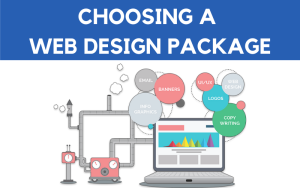Web design plays an important role in creating a successful website. It can be the difference between a user’s frustration or satisfaction when they navigate a website. The web design package is a comprehensive, flexible and affordable web design solution to create a high-quality website. If you are interested in creating a website make sure your website is both visually appealing and user-friendly, it is important to understand the principles of web design. This article will look at seven essential principles of web design that should be taken into consideration when creating any website.
Principle 1: Content
The first principle of web design is content. Content refers to the information, images, and words that are featured on a website. It’s important for web designers to understand how to write effective content and create visuals that resonate with their target audience. Good content engages visitors by providing valuable information in a succinct manner. It should also be easily read and navigated on any device or platform.
Principle 2: Aesthetics
The aesthetic appeal of a website is determined by its layout, typography, color palettes, images and other graphic elements that contribute to its overall look and feel. When making decisions about aesthetics on a website, it’s important to think about whether the visual elements are helping you communicate your message clearly; if not, then they should be reconsidered. It’s also essential to consider individual user preferences; some people may prefer bolder colors or sharper fonts than others. Creating a visually appealing design helps keep visitors engaged and encourages them to explore further content on your site.
Principle 3: Usability
This principle focuses on the ease of use for website visitors and customers when navigating a website, ensuring that content can be found and interacted with quickly and easily. To ensure usability, a good web designer should conduct user testing to see how comfortable users are interacting with the website.
This involves watching how people use the site to identify areas where they struggle or become confused so that those issues can be addressed to improve usability. Additionally, designers should take into account accessibility requirements such as screen reader compatibility and adjustable font sizes in order to make sure all visitors have an equally enjoyable experience on their website.
Principle 4: Accessibility
This means that websites need to be designed with the user in mind, so they are easy to navigate and understand regardless of any physical or technological limitations. It’s also important that sites use appropriate language and avoid jargon, as well as provide alternative versions for people who require them. In addition, information should be organized logically and clearly labeled so visitors can find what they’re looking for quickly and easily.
Accessibility isn’t just about making sure everyone can access the site; it’s about creating an optimal experience for all users. Content should be supplemented with images, videos, and other multimedia elements as appropriate so visitors don’t miss out on any of the intended content or features due to their disabilities or technical limitations.
Principle 5: Functionality
Functionality should also include accommodating different devices including desktop computers, tablets, smartphones and any other device your visitors may use to access your website. As such, it’s essential for websites to be responsive so they can adjust content accordingly depending on what type of device is being used. Ensuring that all content displays properly on all devices is crucial for a successful web design project.
Principle 6: Browser Compatibility
The sixth principle of web design is browser compatibility. This concept ensures that websites are cross-compatible for the most popular browsers available today. This includes Chrome, Firefox, Internet Explorer and Safari – all of which have different capabilities and requirements for coding when creating a website. To ensure your website looks its best across all platforms, it’s important to consider browser compatibility when designing your site.
Principle 7: Interaction Design
This principle focuses on how users interact with the website and how the website responds to user input. It involves designing an interface that is easy to use and understand, as well as making sure users can complete tasks quickly and efficiently. Good interaction design should also make sure that users are not overwhelmed with too many choices or options while they are using the website.
Conclusion
The conclusion of this article looks at the 7 principles of web design and how they can be used to create effective websites. These principles are essential in creating a great user experience, as well as promoting brand identity and ensuring that content is easy to find. By understanding these seven principles, designers can use them to inform their designs and help bring out the best in their work.
Today, web design is more important than ever before. It’s what helps set companies apart from one another, creating a positive first impression for users and potential customers alike. With the 7 principles listed here in mind, designers have an invaluable toolkit with which to craft engaging yet practical website experiences. By taking time to learn about each principle, designers can make sure their websites stand out from the pack for all the right reasons.














Dogs Cane Corso in Moscow
cane-corso.moscow